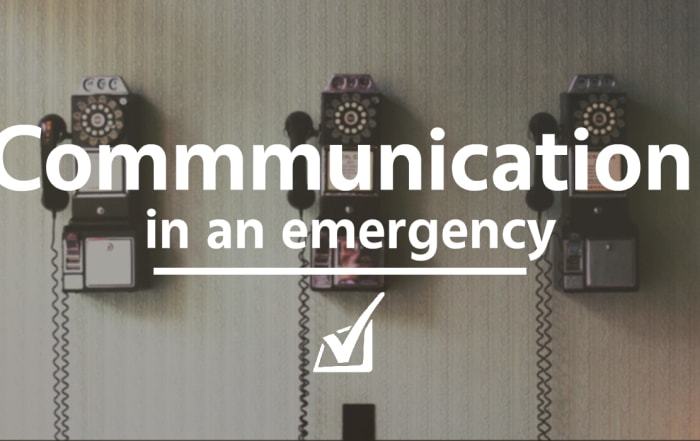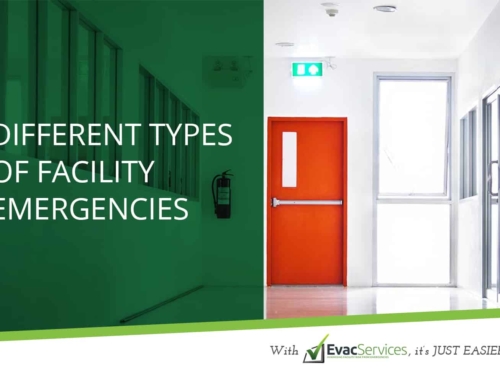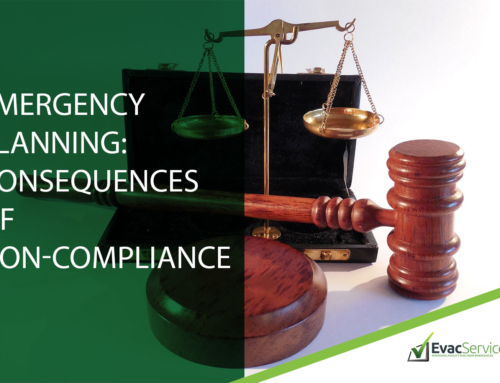No matter how well-documented an emergency plan is, it will be rendered futile unless it is properly disseminated to all parties involved. Needless to say. Therefore, communication remains to be a very crucial element in successfully implementing emergency plans. Because of the sheer number of occupants in a building, it is imperative that a proper system is put in place to ensure a smooth flow and facilitation of instructions. An emergency situation can easily cause panic, and the lack of proper communication channels will only exacerbate this scenario for the worse. To ensure that proper facilitation of the emergency procedures is enacted, a smooth channel for communications must be clearly established.
The Emergency Planning Committee (EPC) is in charge of determining the appropriate communication channels while designing the emergency plan; the EPC may define this in consultation with the Fire Safety Advisor (FSA), where nominated. The Emergency Control Organisation (ECO) will then communicate using the means designated within the plan, before, during and after an emergency. Expected to spearhead the activation of the ECO is the Chief Warden, whose primary task is to ensure that all emergency procedures are being properly activated and that all building occupants are safely ushered to the safest assembly area, upon his determination of the need for an evacuation. Working closely with the Chief Warden is the Deputy Chief Warden, who stands to assist the Chief in all emergency procedure endeavours. Apart from that, however, there is also another officer who must keep in close contact with the Chief, that is the Communications Officer.
The Role of the Communication Officer
As with all other members of the ECO, the Communications Officer takes on their role even before any emergency situation arises. Parts of their pre-emergency responsibilities are the following:
- Ensure ECO Competency in using communication equipment
- Manage emergency response logs and records, in consultation with the Chief Warden
- Ensure currency of emergency contact details
- Attend training, evacuation exercises and assessments
Once an emergency is discovered, whether by himself or any other occupant, he must proceed to the emergency control point and ascertain the nature of the emergency. As the officer in charge of disseminating the proper information to the assigned authorities, he must be able to ensure that the Emergency Services have been duly notified of the situation on-site. That’s just the beginning of duties, too, as apart from communicating to external assistance, he is also expected to keep in close communication with the Chief and Area Wardens, as well as the occupants. To make sure that nothing is lost in translation, he must transcribe and transmit instructions and information from the Chief Warden as faithfully as possible. The dissemination of proper and correct information rests in his hands, so he must make sure he does not miss out any pertinent detail. Depending on what the Chief Warden advises him to do, he must also act immediately as directed. The information the Communications Officer documents will ultimately be used by emergency services to safely bring an end to the situation in the safest means possible. On top of that, the Communications officer must also maintain a log of the event so that the committee will have a reference as to the occurrences during the emergency situation. This record will also come in handy once he collates the records for safekeeping.
Trickling Down of Information
Clearly, therefore, the Chief Warden makes the big decisions – without prejudice to the occupants’ immediate response to the emergency situation they are most under threat of – which are then shared with the Communications Officer. In turn, the Communications Officer documents and records the information. The primary requirement here, therefore, is that everyone is kept on the same page as to the actions necessary to attend to the emergency situation. One small miscommunication can result in an even bigger disaster, thereby increasing the risk of the occupants’ lives. To further assist the occupants in determining if they have any ECO member on the floor with them, whom they can seek assistance from, the ECO members are assigned specific-coloured apparels, such as hat, helmets, caps, vests and tabards:
- White – Chief Warden, Deputy Chief, Communications Officer
- Yellow – Floor / Area Warden (large surface area)
- Red – Local Warden
- Green – First Aid Warden
The activation of the ECO becomes automatic as soon as an emergency has been identified and declared, either by an occupant, or any member of the ECO. The decision to evacuate ultimately rests on the Chief Warden, the facilitation of which will be carried out by the other designated wardens. The deactivation of the ECO also naturally follows upon restoration of the situation back to normal.
Alarm and Communications Systems
To further help inform the occupants of the emergency situation, the following tools and equipment may be considered within the emergency plan:
- Fire indication panel (FIP)
- Whistles
- Verbal Communications (for example, yelling “Fire Fire Fire” when first noticing an emergency)
- Lights, flags, or other visual media
- Emergency Warning Intercommunications Systems (EWIS), Emergency Wardens Systems (EWS) and Warden Intercommunication Points (WIP)
- Public Address Systems (PA)
- Two-way radio systems (where appropriate)
Of course, the occupants must also be trained in recognising the warnings being emitted by these systems so that they will be fully aware of the gravity of the situation, and as such, will be appropriately adept at carrying out the correct emergency procedure.






